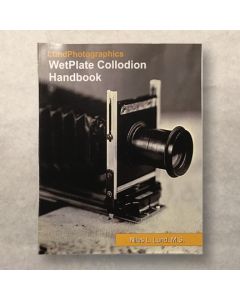Bromo-Iodizer and Silver Nitrate Concentrations
In this video, we examine how varied concentrations of bromo-iodizers in the salted collodion, and silver nitrate concentrations in the silver bath affect the quality, processing robustness, and effective film speed of the sensitized collodion film.
When watching the video, I want to point out the subtle but necessary distinction between collodion sensitivity and effective film speed. The sensitivity of salted collodion is a property of the interaction between a photon and a photosensitive silver halide. Sensitivity deals with individual halides while relative film speed deals with the number of halides per unit area of the film (i.e. very large numbers of silver halides, some of which may have been exposed and some of which may not for any given exposure). To elaborate, for any given silver halide, the sensitivity remains the same regardless of how many halides (photosensitive sites) are available in the film. Effective film speed, on the other hand, is observed as a change in image density given a fixed combination of exposure and development. Because effecitve film speed is a function of the number of photosensitive sites in the film, it can be increased or decreased by increasing or decreasing the number of halides per unit area of the film, resulting in respectively greater or lesser image densities for a given exposure/development combination.
If you found the topic of this video helpful and wanted to learn more about this, and related topics, please consider our Wet Plate Collodion Handbook, which provides a tremendous amount of practical information about the inner workings of the wet plate collodion process.

